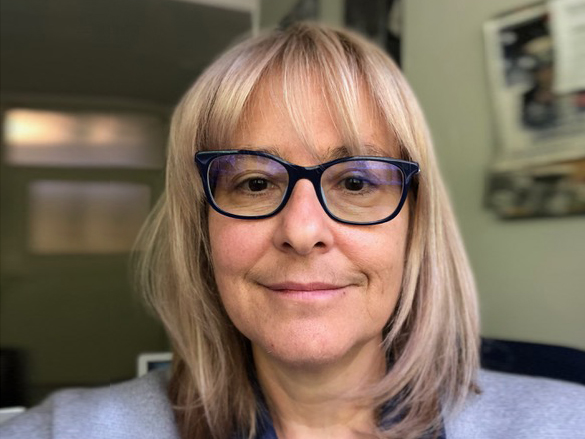
Since 15 November, in the context of the Beyond mission, Luca Parmitano, astronaut with the European Space Agency (ESA), has completed four ExtraVehicular Activities (EVAs), the last of which took place on 25 January. The aim of the EVAs was to replace the cooling system of the AMS-02 (Alpha Magnetic Spectrometer) tracker, that has been collecting data onboard the International Space Station (ISS) since 2011. The AMS-02 is an international experiment, in which Italy is participating with the Italian Space Agency (ASI) and INFN. Its scientific objective is to study cosmic rays in order to contribute, in particular, to the research into primordial antimatter and dark matter. We delved into the operations, which Parmitano has successfully coordinated and conducted so as to enable the experiment to continue its scientific activities, with Bruna Bertucci. Bertucci is a researcher with the INFN Division of Perugia and Professor at the University of Perugia. She is also Deputy Principal Investigator with the AMS-02 experiment international collaboration, which is led by Nobel prize winner Samuel C. C. Ting.
Why did the tracker cooling system need to be replaced?
To ensure the stability of the instrument’s temperature conditions, and, therefore, to improve the quality of the data acquired. AMS-02 is directly exposed to space and, therefore, to extremely variable external temperatures. Because it is thermally isolated from the body of the Space Station, different thermo-regulation systems were planned during its design phase to maintain the temperature of its detectors and of the electronics for reading their signals in the optimal interval for their operation.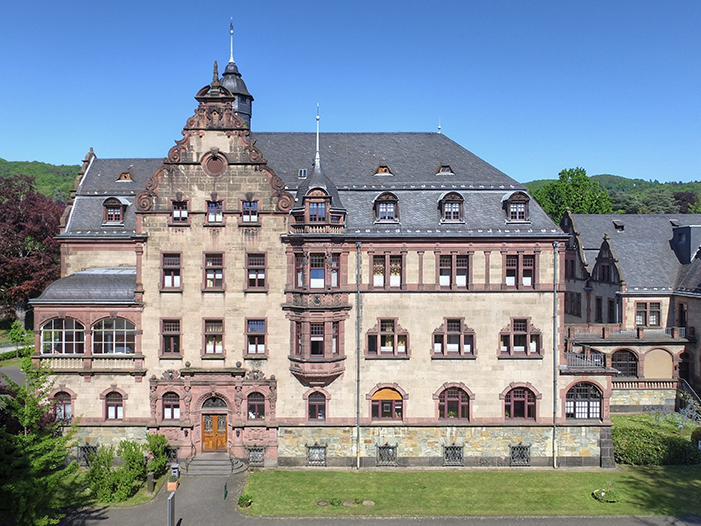
The working session on the 2020 European Strategy for Particle Physics, which took place in Bad Honnef, Germany, from 21 to 25 January, has concluded. It was a week of crucial discussion for the current process of defining the future of particle physics after the LHC. The meeting was convened by the European Strategy Group (ESG), which comprises a scientific delegate from each of the CERN member States and associated member States, directors and representatives of the main European laboratories ...
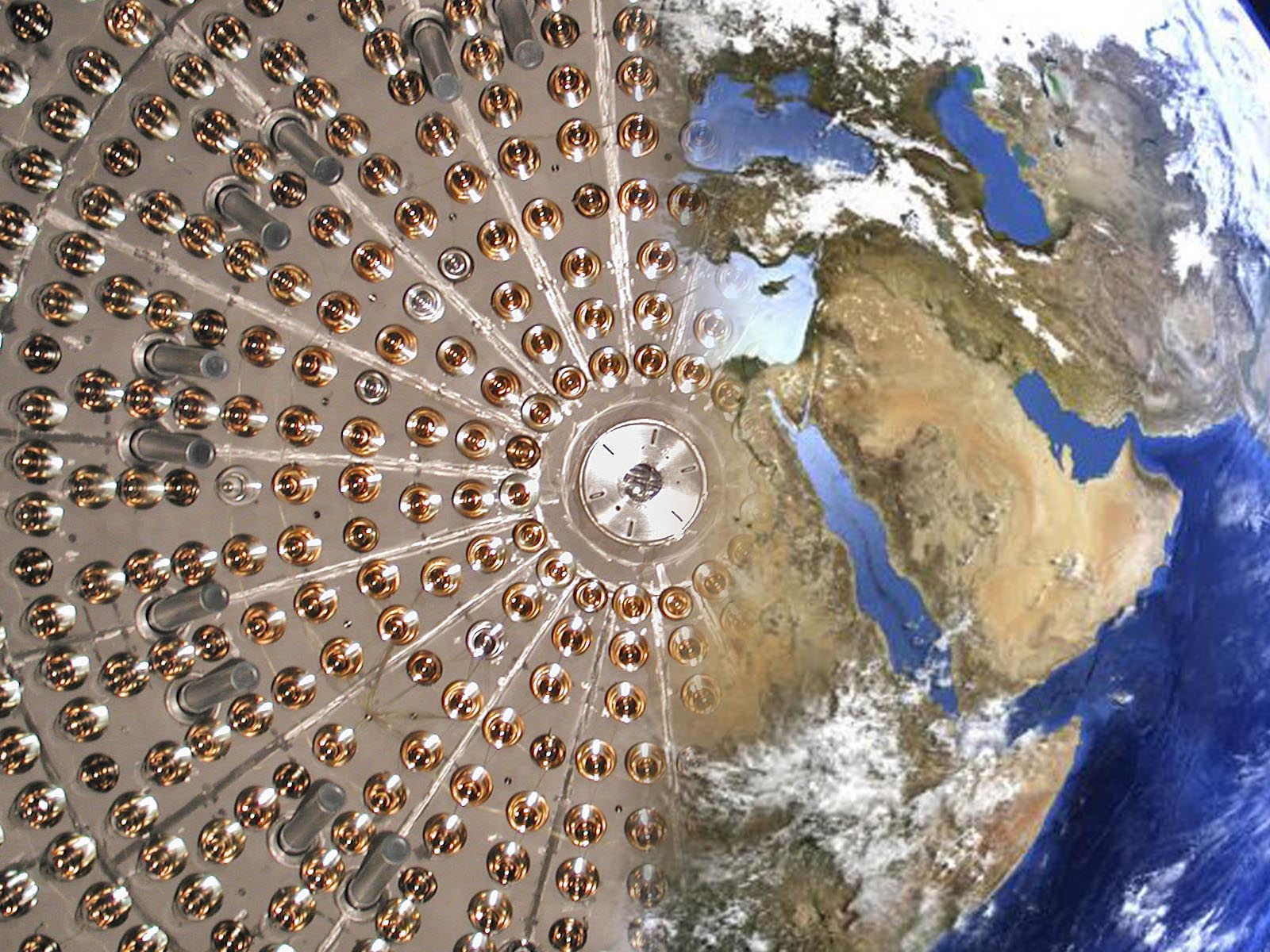
Protected by the Gran Sasso massif from radiation coming from space, and thus immersed in what is called cosmic silence, Borexino is the purest experiment in the world for measuring neutrinos. Not only does the experiment measure neutrinos coming from the Sun, but also those coming from inside the Earth, so-called geoneutrinos. After more than ten years of acquiring data and performing a sophisticated analysis of these, the international ...
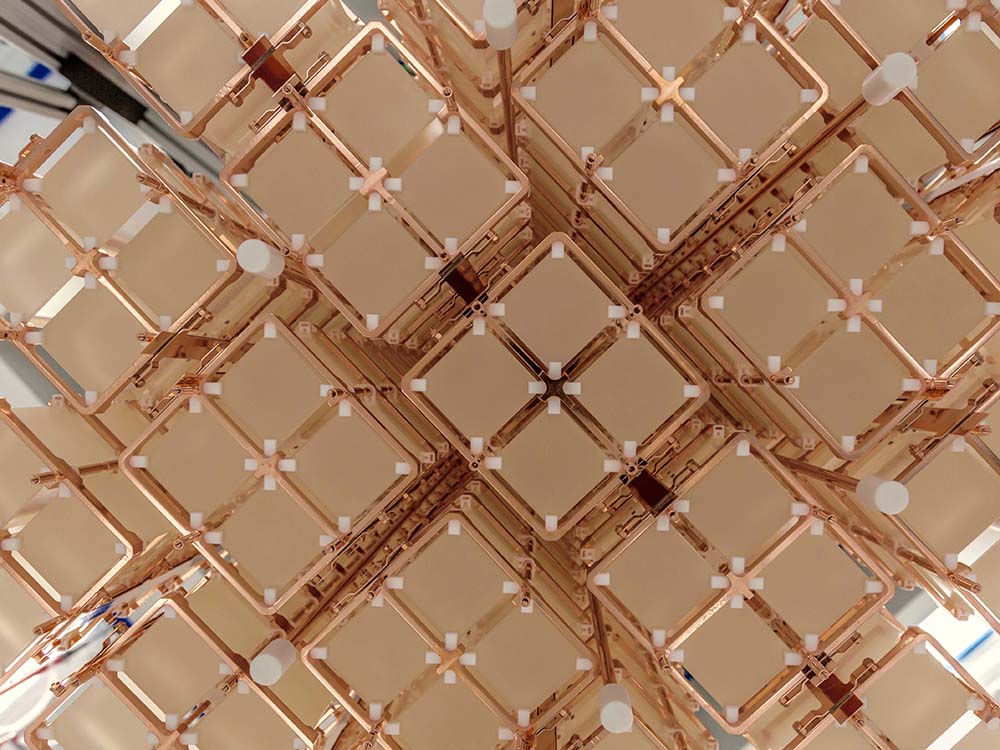
The international scientific collaboration that conducts the CUORE experiment (Cryogenic Underground Observatory for Rare Events) at the INFN Gran Sasso National Laboratories has released its latest experimental results, which represent more than two years of data acquisition (from April 2017 to July 2019). This new study provides an even more cogent limit to the existence of a very rare process, ...
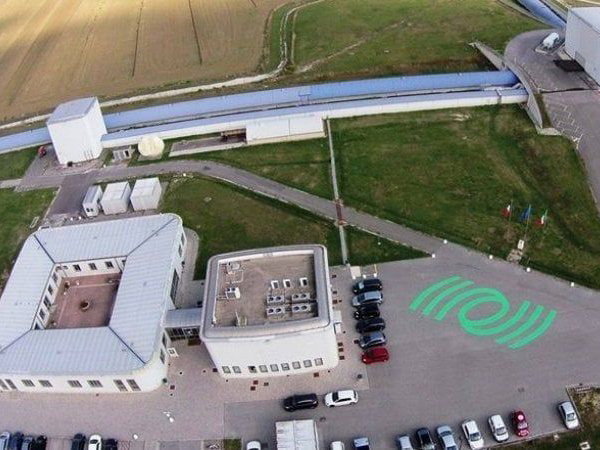
A gravitational wave signal coming from a point situated at a distance of 500 million light years from Earth has been observed by the LIGO and Virgo scientific collaborations. It was presented to the scientific community yesterday evening, which met at the Meeting of the American Astronomical Society underway in Hawaii. The signal, labelled ...
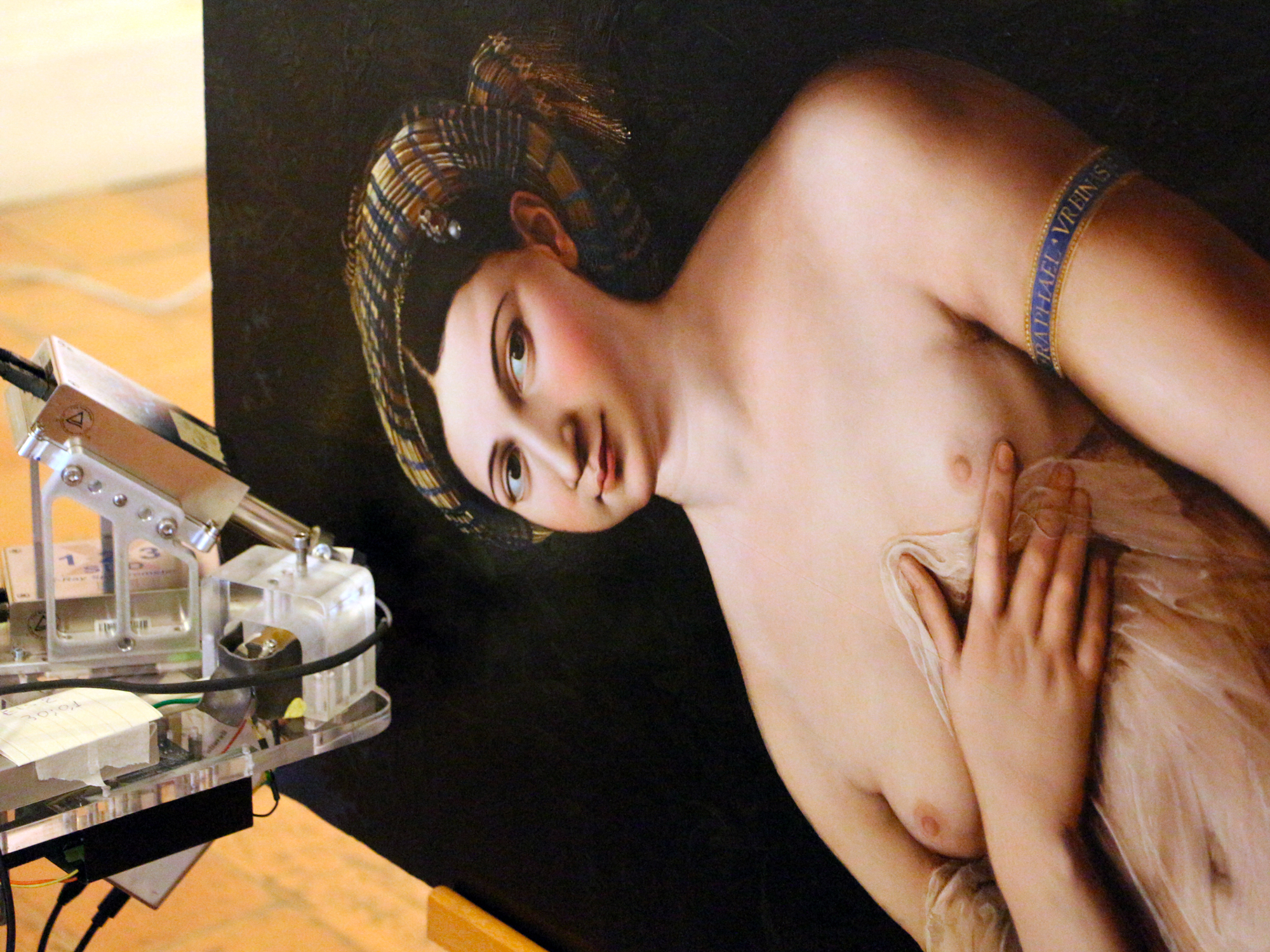
From January 28 to 30, the Barberini Corsini National Galleries dedicated three whole days to investigations and studies on the Raphael's Fornarina. In that period visitors had the opportunity to watch the experts, including INFN researchers, at work on Raphael's masterpiece. In particular, the first day was spent in the Gigapixel+3D photogrammetric acquisition of the painting: a very high resolution ...
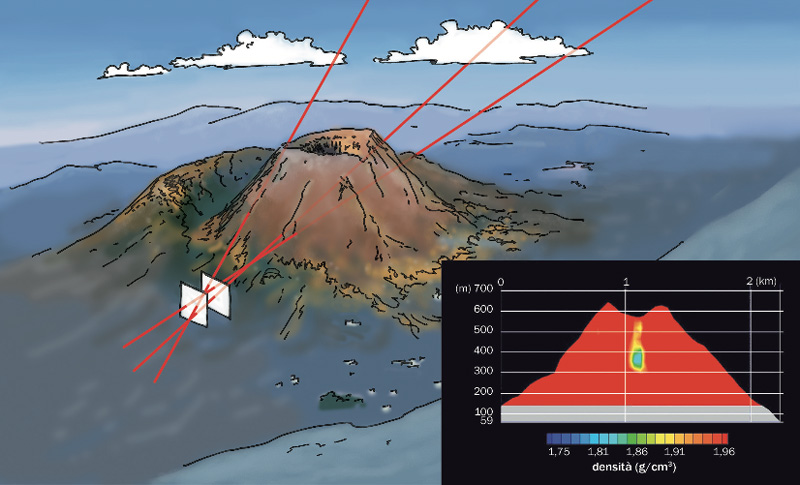 COSMIC PARTICLES FOR STUDYING VULCANOES
COSMIC PARTICLES FOR STUDYING VULCANOES
The Earth's surface is constantly being reached by muons, produced by the interactions of cosmic rays coming from space with atoms in Earth’s atmosphere. They are very energetic particles that are identical to electrons but with a mass 200 times higher, and it is precisely this characteristic of theirs that makes them so penetrating – capable, that is, of passing through matter while losing very little of their energy. After neutrinos, they are the most penetrating particles and, in any case, unlike neutrinos, they are not a source of astronomic information as they are only produced in the Earth’s atmosphere. They do constitute, however, a very powerful tool for investigating structures and objects on Earth. The ability to pass through very thick matter, including several kilometres of rock, makes it possible, in fact, to use muons to perform “muographies” of structures with large dimensions. These are very similar to radiographies, but have the advantage, compared to X-rays, of performing deeper probes. The technique called muography was first used in the late 1960s by the Nobel prize for physics Luis Alvarez to search for hypothetical secret chambers inside the pyramid of Chefren. The study of pyramids with this technique has brought recently, in 2017, to the discovery of a secret chamber inside the Great Pyramid of Giza by a team of researchers on the international ScanPyramids project. ...
Details of Raphael’s painting La Fornarina under analysis through the new Ma-XRF system developed by the INFN.
© Gallerie Nazionali Corsini Barberini
INFN - COMMUNICATIONS OFFICE
comunicazione@presid.infn.it
+39 06 6868162
Coordination:
Francesca Scianitti
Project and contents:
Eleonora Cossi, Francesca Mazzotta, Francesca Scianitti, Antonella Varaschin
Graphic design:
Francesca Cuicchio
Translation
ALLtrad
ICT service:
Servizio Infrastrutture e Servizi Informatici Nazionali INFN